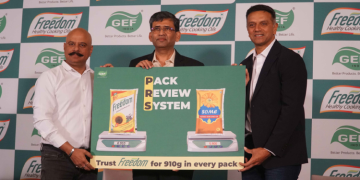The OTT business in India is seeing a surge thanks to the pandemic and the WfH scenario, but platforms like Netflix and some of the traditional home grown players who are a SVOD platform are now looking at the option of going AVOD.
Medianews4U spoke to few industry experts Karan Taurani, SVP – Research Analyst (Media, Internet & Consumer Discretionary), Elara Capital, Uday Sodhi – Senior Partner Kurate Digital Consulting, Shrenik Gandhi, Co-founder & CEO, White Rivers Media and Zubin Dubash, COO-ShemarooMe and Digital Businesses, Shemaroo Entertainment on this phenomenon.
Traditional SVOD OTT platforms are shifting to AVOD, your thoughts?
Karan: If you look at the SVOD OTT platforms in terms of why they are shifting to AVOD, the reason is twofold, in SVOD there are certain imitations in terms of scale. You cannot increase the ARPU because India is a price sensitive market and theavily fragmented right now as we speak. As the market is fragmented there is a lot of competition in two things, pricing and content cost. The content cost is a major heavyweight and you cannot price the platform beyond a certain price as the competition is very high. On certain platforms where the content is very compelling like cricket or other sports, there is an extreme restriction in terms of raising the price beyond a bar. For example: Netflix though they have compelling and premium content they are struggling to maintain their prices.
Basically it’s a dilemma, do you want subscribers growth or pricing growth?
The way ahead is subscriber growth and not pricing growth. I think ARPU are an issue to increase prices and that is one reason why they are exploring AVOD as the new revenue stream and the second decision is that despite the healthy subscriber base growth, content costs are also rising phenomenally; incremental revenue coming from AVOD will mitigate the negative impact on content cost. We can see ARPU and content cost are the reasons why they are moving toward AVOD.
Uday Sodhi: As OTT business face growth pressure post Covid, they are looking for new ways of reaching larger user base. SVOD platforms are looking at AVOD & TVOD as growth opportunities.
India is a large diverse market and to get a leadership position OTT platforms will need to offer multiple payment options including free/ ad- supported.
Zubin: SVOD platforms are shifting to AVOD in order to get more consumers to sample and experience the content and thereby increase the top of the funnel. There is a massive segment of users who initially do not wish to pay for content and are fine with ads playing while streaming. The approach is to offer them an experience of great content and gradually hand-hold them to subscribe. And during this journey the massive amount of free streaming by sharply profiled audiences, serves as a great opportunity to monetize via ads. Though this ad revenue cannot stand alone as a business in the long run, it surely mitigates the cost of content and other costs in running a successful OTT business.
One moot question, are today’s subscribers paying for a platform or the content?
Karan: I don’t think today’s subscribers are paying for platforms at all; they are paying only for the content. I think paying for a platform is something which will emerge after years. The OTT market is very new in India is only about 7 years old, maybe 10yrs down the line from hereon when the OTT platform becomes a 12-15 yr. old phenomena and when you have customers hooked on to a certain platform and open to exploring whatever content the platform gives. That is the time when they will get married to a platform & rely very heavily on a platform. In this over fragmented market with so much veracity in content I think the customers are only looking at content and not the platform. But definitely every platform has an ambition eventually to make sure that their customers are retained, sticky in nature, this is not easy, and they have to invest a lot in tech, user experience and in terms of good quality content which will develop a positive perception in the minds of the customer which will, lead to customers being sticky in nature.
As of now we are in a market in India wherein customer retention is a huge challenge. Customer acquisition is not tough nowadays as you have partnerships, packages plans, attractive promotional plans in terms of ARPU, retention is tough as there is enough and ample competition available, who is offering other kind of content and a customer quickly, deactivates and moves onto another platform. Churn rates are phenomenally high in the market today.
Shrenik: The subscribers pay for the content but the way the content is bundled, you subconsciously end up paying for the platform. So, while the customer may prefer to pay for the content, they end up paying for the platform.
Zubin: Users are “content loyal” by DNA. Whether on TV or OTT, that habit doesn’t change. Take Live Cricket on TV for example…users don’t bother which channel it’s playing on. They jump around channels and stick onto the one that their match is showing. Likewise, on OTT too users will opt for their favourite show on any platform and even pay for it. At ShemarooMe, we have been the only OTT to offer one new quality piece of content every week to our customers, thereby making a long stride in the direction of Platform Loyalty through a promise of quality content at a regular frequency.
TVOD is gaining ground for premium content in some platforms, will it work in India?
Karan: When it comes to TVOD it boils down to the fact that India is a very price sensitive and value centric market. There are 2 things, one the price is low and affordable and secondly getting more by paying less. That is the mind-set of the Indian market. I don’t think TVOD is going to gain traction. We have seen this in the past as well, Google Play Store, Apple selling content on a rental basis or on a purchase basis, but I don’t think people are ready to own content. They will, once Data cost goes up significantly. In India the data cost is so low that people don’t want to own content and on TVOD I don’t think it will scale up, it will be a very small customer base and premium in nature that will opt for TVOD. In today’s scenario if we look at some of the OTT matric numbers, why would someone go to TVOD unless they are not subscribed to a particular platform.
A premium customer already has subscriptions to all the major OTT platforms and I don’t think they will separately pay for TVOD. As far as the non-premium audience, a very miniscule number of customers in the lower end of the pyramid will pay for TVOD if the said content is very compelling. If people are not paying for TVOD then monitisation will become a challenge. In this the monetisation has to be good enough for the content syndicator on the platform to give us the premium content. For example “Radhe” went on TVOD, the content cost was high but the recoveries were phenomenally low.
This is not only in India but globally also this is the trend; people are not willing to pay for TVOD. When people go out to watch a film, it is an experience, so paying for a movie on TVOD is not happening. As far as TVOD for web series is concerned, if it is on a particular platform and they would not be selling it for a premium.
Shrenik: I’m not a fan of TV On Demand. If a person is smart enough to pay for TVOD, I believe they can be a smart TV consumer which essentially is OTT. So, I don’t see TVOD having a future. I have my bigger bets placed on OTT.
Where do you see OTT in India in the next 2 years?
Karan: The future is definitely bright and I am expecting the market to grow by 30-35% in the next 5 years.
The growth will be 2 fold; it will be led by SVOD & AVOD. The SVOD numbers will grow by 40% and the AVOD numbers will grow by 35%.
In terms of AVOD, it will grow higher because of the surge in digital advertising, as this has seen a growth of 25%+. Video advertising will see a growth momentum in the next 3-5 years unless we see Web 3.0 Metaverse innovation coming in.
AVOD will keep on growing at 30%+ and SVOD will grow faster as the base in India is very small but within SVOD the incremental growth will come from the number of subscribers and not ARPU. ARPU is only going to remain flat or go down. Unless these platforms scale up to a respectable level in terms of subscribers I don’t think they will be able to raise prices. SVOD growth of 35% – 40% will be led by subscribers and AVOD growth will be led by advertising.
Uday: OTT business will continue to grow in the years ahead. Post Covid might see some correction but in the long run the market will grow at a faster pace.
Shrenik: I think OTT will become a lot more ingrained in society. There would be a lot many OTT first launches, a lot many OTT first integrations, and TV vs OTT infliction point will come in much sooner than we expect. It might come in the next 24 months as well.]
Zubin: In the next two years, there will be consolidation for sure. Lots of players will find sweet spots to merge and collaborate on content, user base, and technology IPs. OTT providers will be far more focused on regional originals and specific interest cohorts, such as Kids, Devotional, Classics, and more. We at ShemarooMe, are already catering to Gujarati, Kids and Devotional cohorts which have seen exceptional traction. In the future you will see many more cohorts emerge in the OTT space.

















